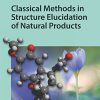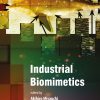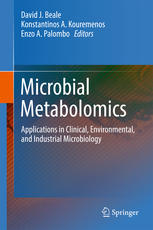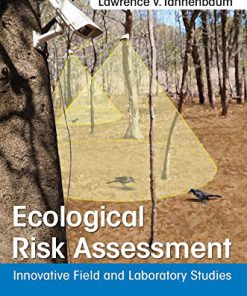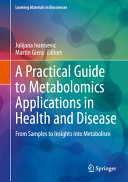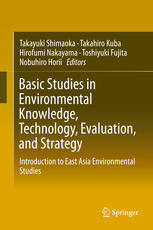Environmental Metabolomics Applications in field and laboratory studies to understand from exposome to metabolome 1st Edition by Diana Alvarez Munoz 0128181973 9780128181973
$50.00 Original price was: $50.00.$25.00Current price is: $25.00.
Environmental Metabolomics: Applications in field and laboratory studies to understand from exposome to metabolome 1st Edition by Diana Alvarez-Munoz – Ebook PDF Instant Download/DeliveryISBN: 0128181973, 9780128181973
Full download Environmental Metabolomics: Applications in field and laboratory studies to understand from exposome to metabolome 1st Edition after payment.
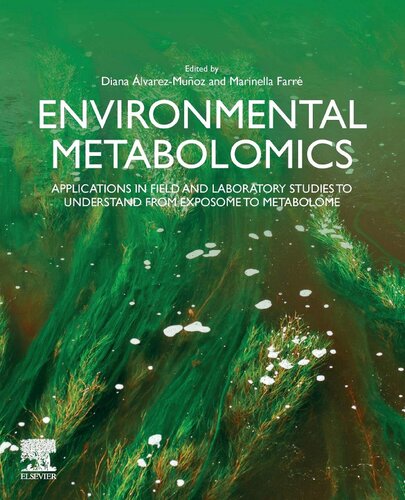
Product details:
ISBN-10 : 0128181973
ISBN-13 : 9780128181973
Author: Diana Alvarez-Munoz
Environmental Metabolomics Applications in Field and Laboratory Studies: From the Exposome to the Metabolome presents an overview of the current state of aquatic environments and problems caused by human pressure and daily life. The presence of contaminants in nature and their effects are evaluated, along with recommendations for preservation. This book not only shows readers how to implement techniques, it also guides them through the process. As metabolomics becomes a more routine technique for environmental studies and future perspectives, a guide for validation and globalization of current approaches is needed.
Environmental Metabolomics: Applications in field and laboratory studies to understand from exposome to metabolome 1st Table of contents:
1 – Fundamentals of environmental metabolomics
1. Environmental stressors
1.1 Contaminant stressors
2. Ecotoxicology
3. Metabolomics
4. Environmental metabolomics
4.1 Study design
4.2 Collection of organisms and experimental exposure
4.3 Sample collection, sample preparation, and metabolite extraction
4.4 Analytical techniques for data collection
4.5 Raw data preprocessing and data analysis
4.6 Biological interpretation of the results
5. Exposure to contaminant mixtures
6. Summary and environmental biomonitoring efforts
References
2 – Analytical techniques in metabolomics
1. Introduction
2. Sample preparation methods for metabolomics
2.1 Minimal sample preparations
2.1.1 Dilution
2.1.2 Solvent protein precipitation for biofluids
2.1.3 Solvent extraction for tissues
2.2 Selective sample preparations
2.2.1 Solid-phase extraction and solid-phase microextraction
2.2.2 Filtration and delipidation/deproteinization techniques
2.2.3 Electromigration-based extraction techniques
2.2.4 Derivatization methods (nonvolatile metabolites)
2.3 Recommendations for the evaluation of sample preparation
3. Separation and identification methods
3.1 Nuclear magnetic resonance spectroscopy
3.2 Mass spectrometry
3.2.1 Gas chromatography coupled to mass spectrometry
3.2.2 Liquid chromatography coupled to mass spectrometry
3.2.3 Ion mobility mass spectrometry
3.2.4 Capillary electrophoresis mass spectrometry
4. Summary and future trends
Acknowledgments
References
3 – Metabolic profiling of biofluids in fish for identifying biomarkers of exposure and effects for
1. Introduction
2. Metabolomics of biofluid
3. Methodological approach and platforms
3.1 Sampling
3.2 Sample pretreatment
4. Fish biofluid metabolome profiling in environmental studies
5. Advantages, drawbacks, and future perspectives
Acknowledgment
References
4 – Environmental metallomics and metabolomics in free-living and model organisms: an approach for u
1. Introduction
2. Typical analytical approaches for environmental metallomics/metabolomics
2.1 Metallomics/metabolomics workflows for nontargeted analysis
2.2 Metallomics/metabolomics workflows for targeted analysis
2.3 Sample treatment in environmental metallomics/metabolomics
2.4 Data processing and analysis in environmental metabolomics
3. Application of metallomics/metabolomics approaches to laboratory exposure experiments to toxic me
3.1 Arsenic exposure
3.2 Cadmium exposure
3.3 Arsenic+cadmium exposure
3.4 Mercury exposure
3.5 General metabolic alterations associated with toxic metal exposure
3.5.1 Energy metabolism depletion
3.5.2 Cell membrane impairment
3.5.3 Other metabolic disorders
4. Application of metallomics/metabolomics to environmental issues caused by metal exposure
5. Final remarks
Conflict of interest
Acknowledgments
References
5 – The metabolic responses of aquatic animal exposed to POPs
1. Introduction
2. Types and sources of pollution
2.1 Pesticide
2.2 Industrial chemicals
2.3 Unintentional production
3. Occurrence in the aquatic environment and biota
4. Toxic effects on aquatic animals
4.1 Endocrine disruption
4.2 Reproductive and developmental toxicity
4.3 Genotoxicity/carcinogenicity
5. Application of metabolomics in aquatic animals for the profiling of POPs
5.1 Application of metabolomics profiling for bivalves exposed to POPs
5.2 Application of metabolomics profiling for teleost exposed to POPs
5.3 Application of metabolomics profiling for amphibian exposed to POPs
5.4 Application of metabolomics profiling for aquatic mammalian exposed to POPs
6. Future challenges and possibilities
References
6 – Metabolomics in plant protection product research and development: discovering the mode(s)-of-ac
1. Introduction
2. Discovery and study of the MoA of PPPs and assessment of their toxicity using model biological sy
2.1 Metabolomics pipeline
2.2 Model biological systems used in the discovery and study of the MoA of PPPs and the assessment o
2.2.1 Plants
2.2.2 Microorganisms
2.2.3 Aquatic organisms
2.2.4 Earthworms
2.2.5 Rats and mice
2.2.6 Cell cultures
3. R&D of the next-generation PPPs: focusing on the potential and contribution of metabolomics in th
3.1 Bioelicitors: endophytes and algal extracts
3.1.1 Endophytes
3.1.2 Algal extracts
3.2 Nanomaterials and nano-plant protection products
4. Summary and future trends
References
7 – Metabolomics strategies and analytical techniques for the investigation of contaminants of indus
1. Introduction
2. Metabolomics strategies for testing toxicity of chemicals from industrial origin
2.1 Exposition to a single contaminant
2.2 Exposition to a mixture of contaminants
2.3 Identification of biomarkers in real samples
2.4 Metabolomics link to other techniques for the assessment of potential effects
2.4.1 Combination with other omics techniques
2.4.2 Combination with other toxicological techniques
3. Analytical techniques
3.1 Sample preparation
3.2 Instrumental analysis
4. Future trends
References
8 – Mass spectrometry to explore exposome and metabolome of organisms exposed to pharmaceuticals and
1. Pharmaceuticals and personal care products are widespread in the environment
2. PPCPs can disturb the normal functioning of organisms
3. Contribution of high-resolution mass spectrometry–based approaches to exposome characterization
4. Metabolomics provides information on expected and unexpected molecular effects in organisms
5. Environmental metabolomics may contribute to the definition and application of adverse outcome pa
6. Summary and future research
Acknowledgment
References
9 – Metabolomics effects of nanomaterials: an ecotoxicological perspective
1. Introduction
2. Metabolomics strategies
3. Common analytical tools for metabolomics
3.1 NMR-based metabolomics
3.2 MS-based metabolomics
4. Metabolomics in nanotoxicology
4.1 Metal nanoparticles
4.2 Metal oxide nanoparticles
4.3 Quantum dots
4.4 Carbon-based nanomaterials
4.5 Polymeric nanoparticles
5. Conclusions and future works
Acknowledgments
References
10 – Environmental metabolomics and xenometabolomics for the assessment of exposure to contaminant m
1. Introduction
1.1 Contaminant mixtures in the aquatic environment
1.2 Study of the toxicity of mixtures: classic and metabolomics approaches
2. Application of metabolomics/xenometabolomics for chemical mixtures
2.1 Exposure conditions
2.1.1 Experiments performed using a mixture of selected compounds
2.1.2 Experiments performed using real contaminated waters
2.2 Model organisms
2.3 Sample pretreatment
2.4 Analytical approach: target versus nontarget/HRMS versus NMR
3. Biomarkers discovering
3.1 Metabolome
3.2 Xenometabolome
4. Challenges and future research
Acknowledgments
References
11 – A snapshot of biomarkers of exposure for environmental monitoring
1. Introduction
1.1 Metabolic profile of fish exposed to organic contaminants
2. Biomarkers’ identity
3. Pathways disrupted
4. Conclusions and future trends
Acknowledgments
References
12 – Future trends in environmental metabolomics analysis
References
People also search for Environmental Metabolomics: Applications in field and laboratory studies to understand from exposome to metabolome 1st:
metabolomics explained
what is metabolomics used for
how does metabolomics work
metabolomics environment
metabolomics example
Tags: Environmental Metabolomics, Applications, laboratory studies, metabolome, Diana Alvarez Munoz
You may also like…
Business & Economics
Translational Biotechnology : A Journey from Laboratory to Clinics. 1st Edition Hasija
Science (General)
Relationships & Lifestyle - Diet & Nutrition
Organic and Carbon Gels From Laboratory Synthesis to Applications Ana 3030138976 9783030138974
Science (General) - Research & Development


